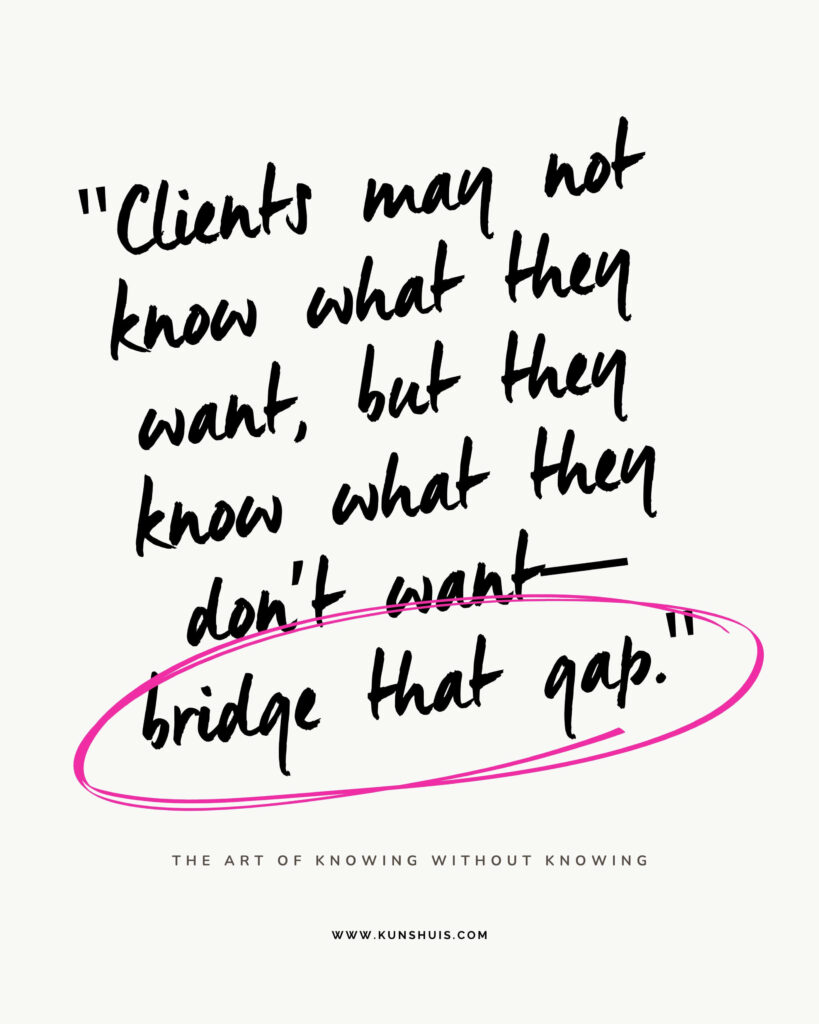Let me take you back to a time when the design world wasn’t cluttered with hashtags, trending reels, and the constant buzz of notifications. A time when you met a client face-to-face, and in that first handshake, a world of unspoken words and energies flowed between you. I remember it like it was yesterday—walking into a client’s office, the scent of fresh coffee lingering, the soft hum of activity in the background, and there, at that moment, something clicked. I could see the end result as clear as day, even before we sat down to discuss the brief.
You see, back then, I didn’t have a fancy term for it. Some might call it a sixth sense, and others might label it as intuition. But for me, it was simply knowing—knowing what the client wanted, sometimes before they even knew it themselves. It wasn’t magic, though it certainly felt that way. It was about observing, listening, and truly understanding the person sitting across from me. The way they spoke, the clothes they wore, the car they drove—it all painted a picture, not just of who they were, but of the design they needed.
But as the years rolled on and the industry transformed, the noise grew louder. Social media exploded, and suddenly, everyone had something to say, a brand to shout about. Strategy became the new buzzword, and with it, the art of listening, truly listening, seemed to slip through the cracks. Yet, amidst all the noise, that intuition, that gut feeling, remained my guiding light.
I learned to design backwards—start with the end in mind, visualize the future the client desired, and then work my way to the present. It’s about more than just design; it’s about creating something timeless, something that evolves with the client’s business, something that grows with them as markets shift and trends change. This isn’t a skill you pick up overnight, but it’s one you can learn. It’s about relationships, about tuning into the nuances of body language, the subtleties of tone, and the energies that words alone can’t convey.

Books about body language, subliminal messaging, and the energies that flow through us all—these are my companions, my tools in decoding the unspoken. Because let’s be honest, clients often don’t know what they want, but they sure know what they don’t like. It’s our job to bridge that gap, to guide them to that place where they finally see what they’ve been searching for.
And here’s the secret to becoming a designer who stands the test of time: it’s not just about the work; it’s about the connection, the understanding, the feeling of being truly seen and heard. Clients don’t just come back because you delivered a beautiful design—they return because you made them feel understood, valued, and connected. Your role in these relationships is not just as a designer, but as a trusted guide, leading your clients to the designs they’ve been searching for.
Whether you’re a freelancer or an in-house designer, the difference between having a job and having a life-giving career lies in this connection. It’s about embracing an attitude of lifelong learning, constantly evolving not just as a designer but as a person. This journey, this growth, is what fuels your creativity, your passion, and, ultimately, your success. It’s what turns a career into a living, breathing part of your life—a source of joy, love, and fulfilment. It’s not just about the work; it’s about the connection, the understanding, the feeling of being indeed seen and heard.
So, I urge you, my fellow creatives, to open yourself up to new ways of thinking, of feeling, of designing. Let your intuition guide you, let your relationships inspire you, and let your passion for learning propel you forward. Because, in the end, it’s not just about creating designs; it’s about making connections, building relationships, and living a life that’s as vibrant, versatile, and sophisticated as the designs you bring to life.


